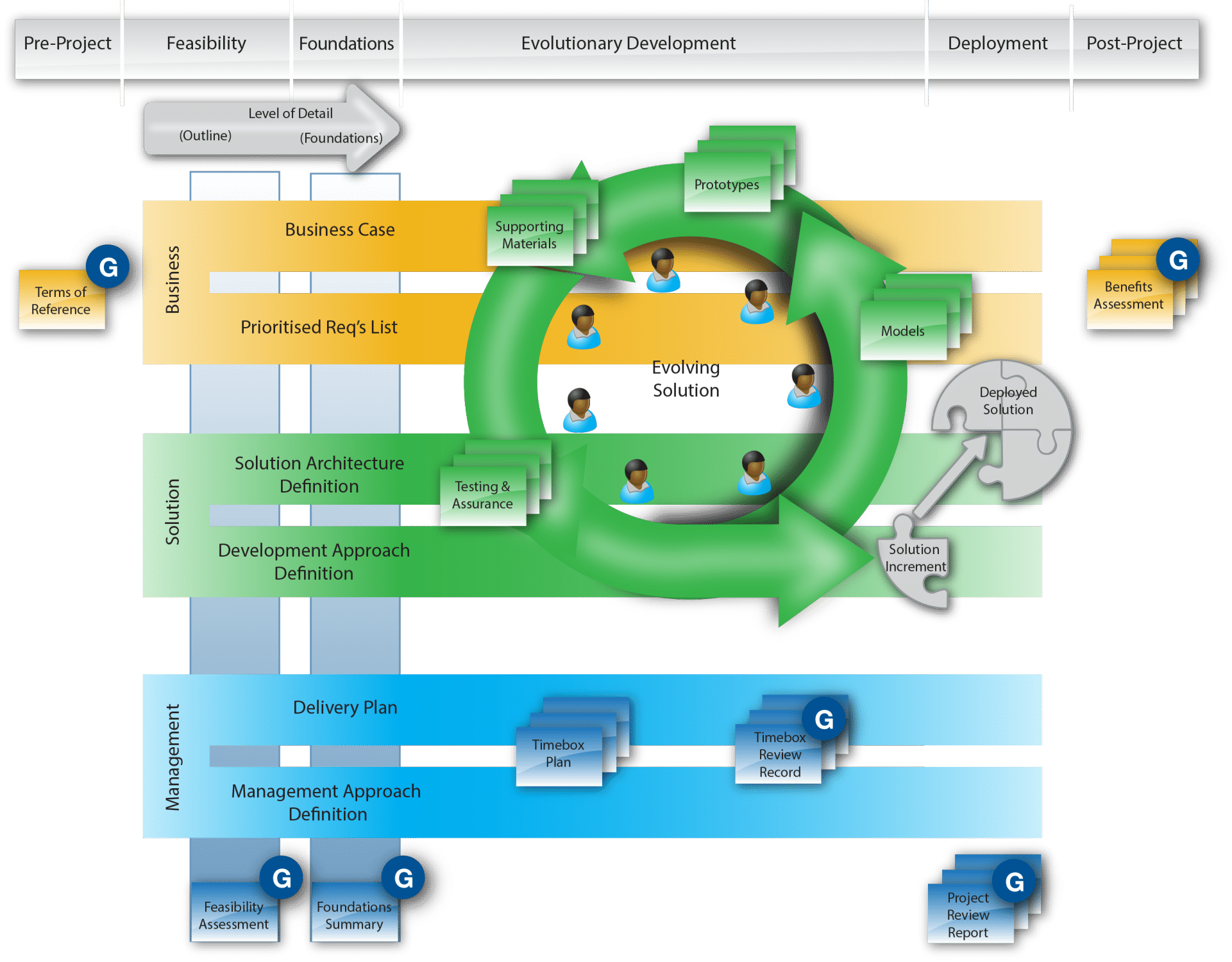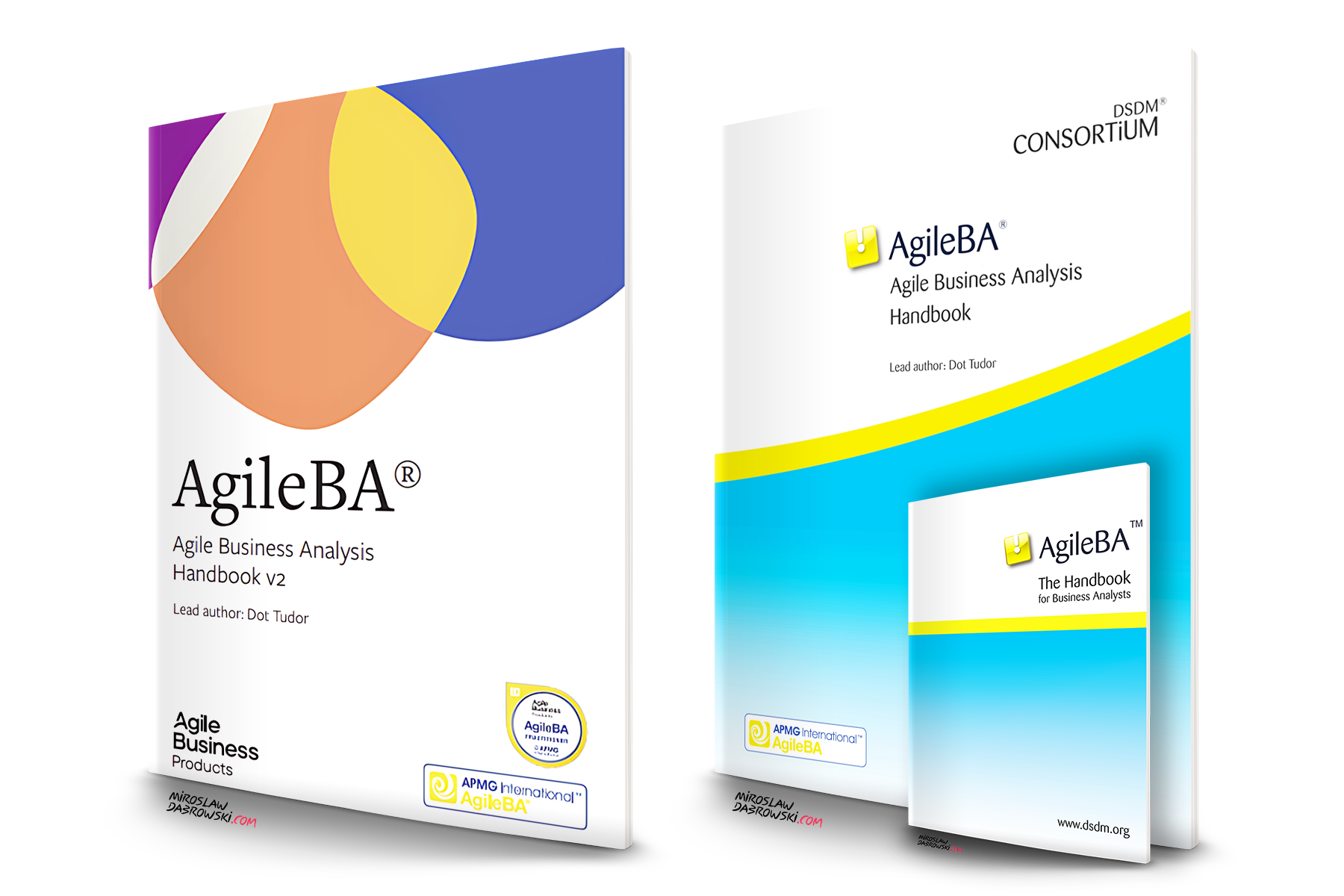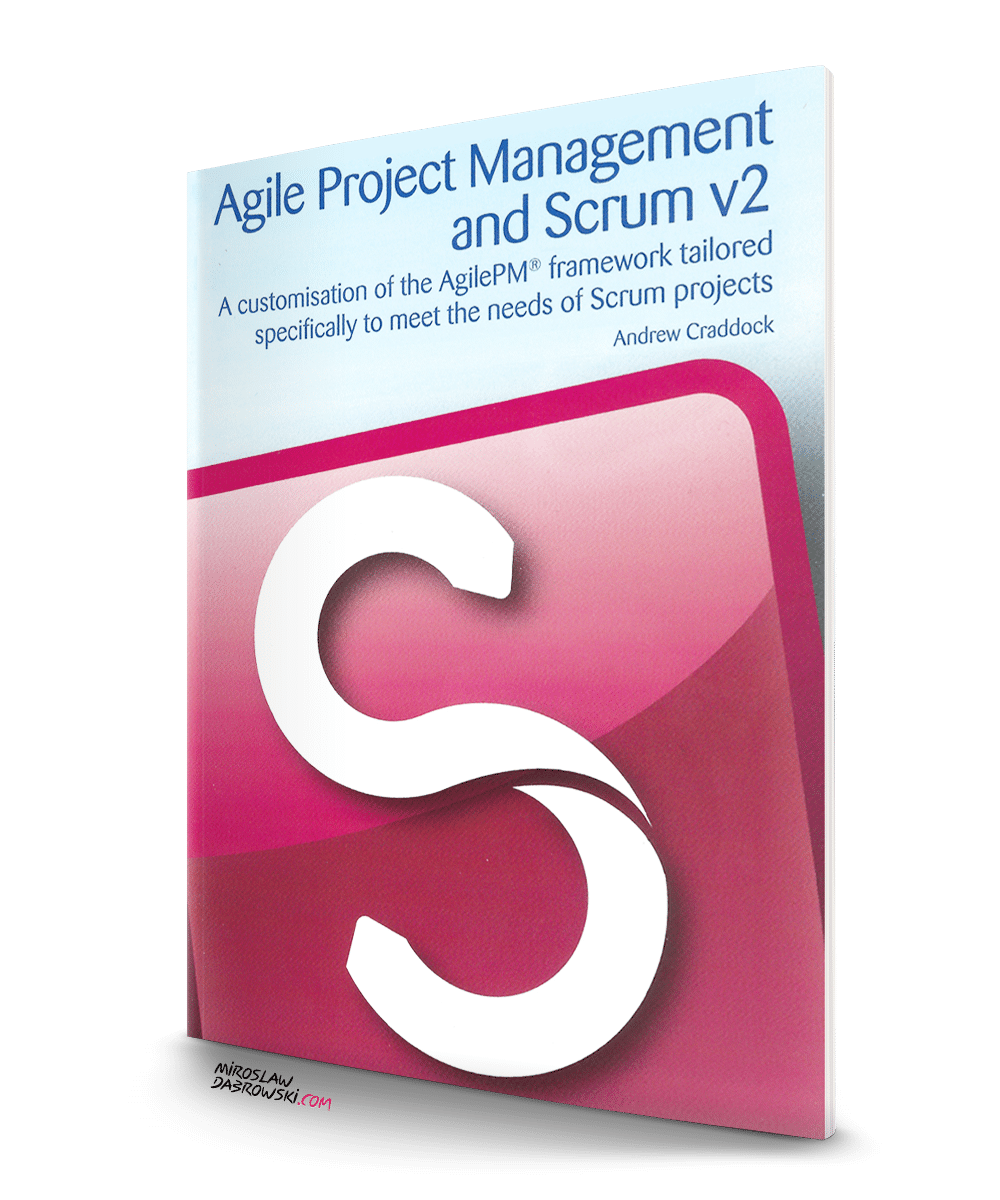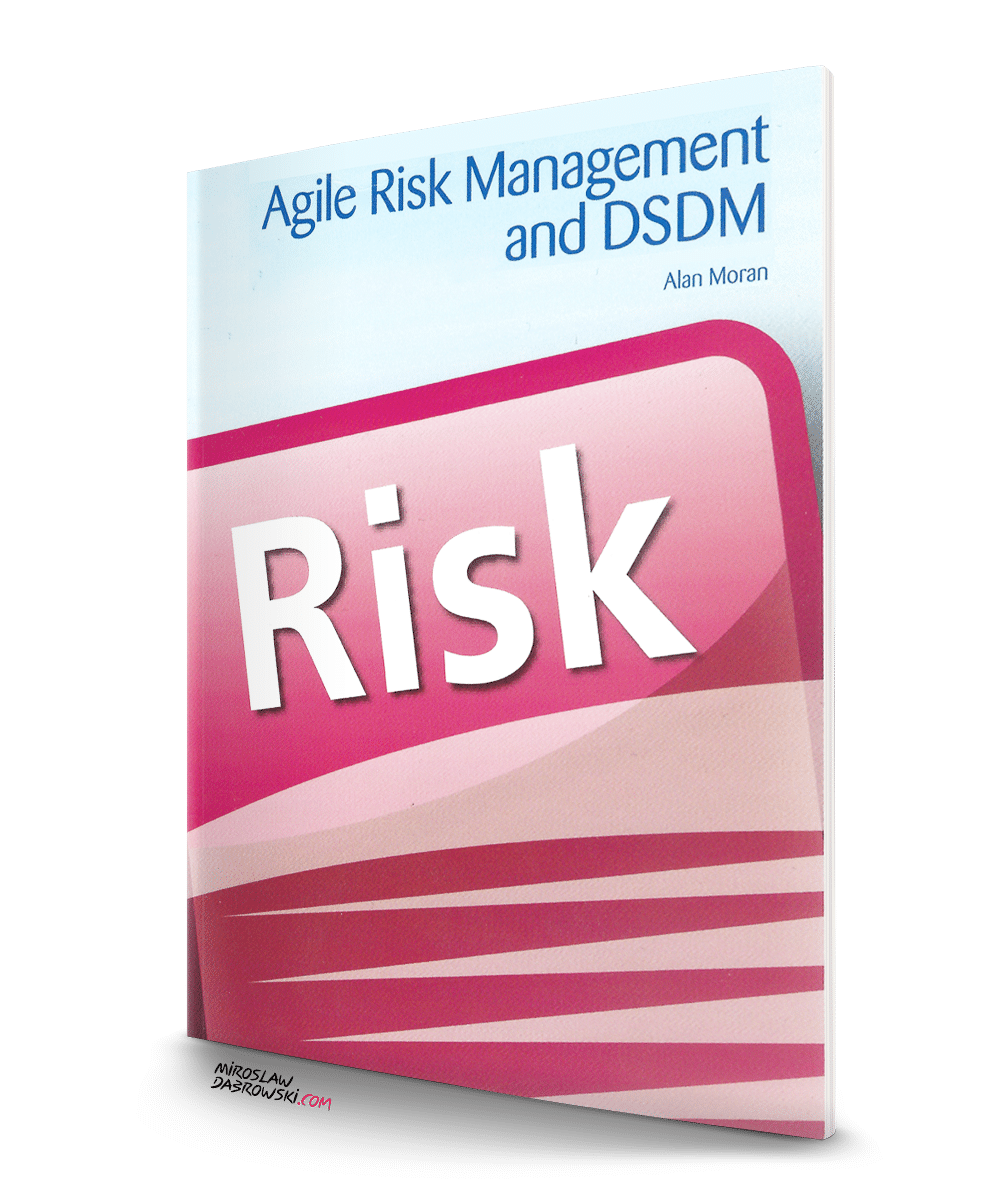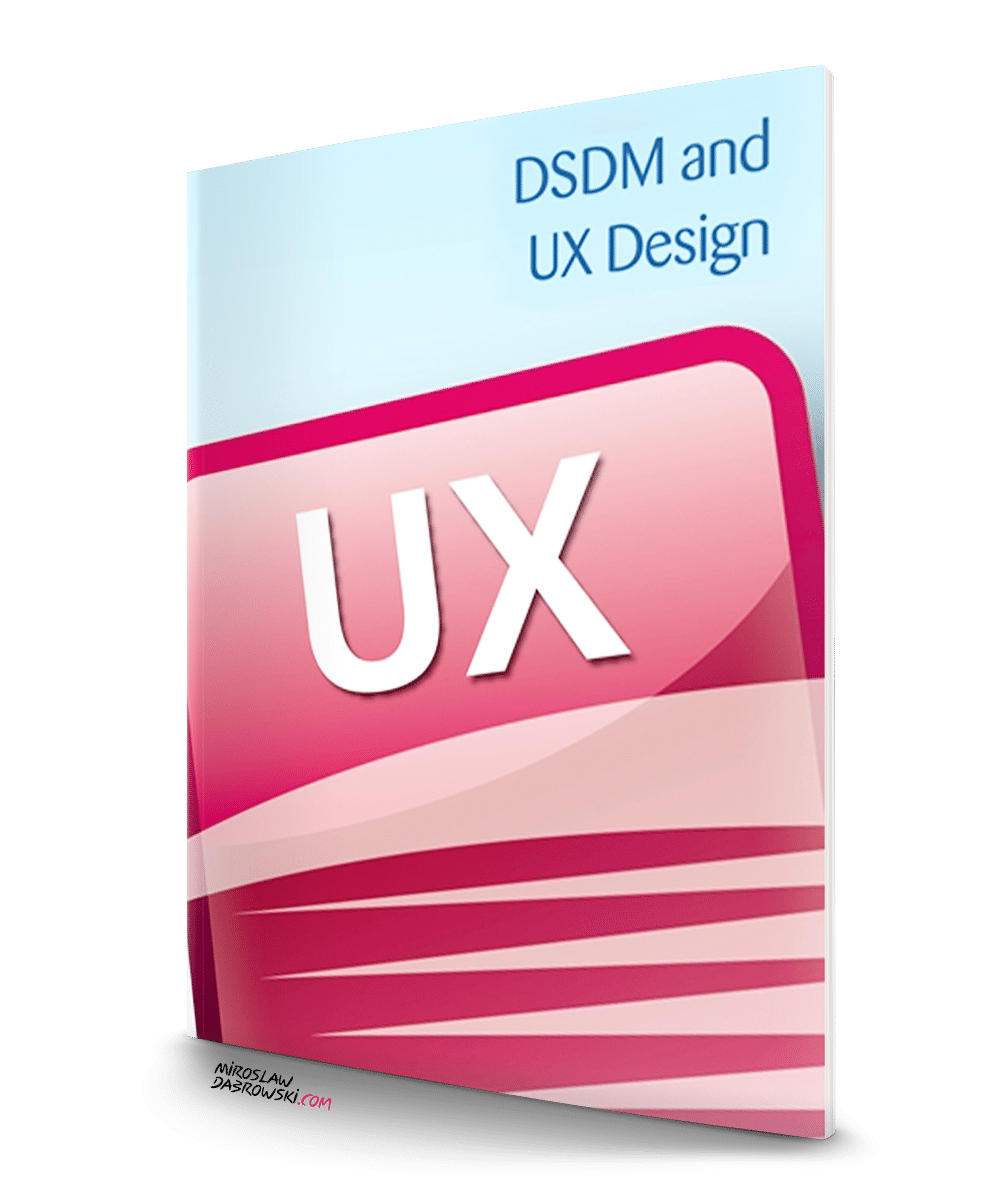AgileBA® (Agile Business Analysis) to zbiór dobrych praktyk związanych z analizą biznesową w organizacjach i projektach, które stosują zwinne lub hybrydowe podejście do realizacji projektów. AgileBA jest rozwinięciem podejścia DSDM Agile Project Framework (ang. DSDM – Dynamic Systems Development Method), które rozszerza ten framework o zestaw praktyk, technik i narzędzi dedykowanych dla ról Analityków Biznesowych i Analityków Systemowych. AgileBA jest podejściem dającym wskazówki umożliwiające sprawne przeprowadzanie analizy biznesowej przez cały cykl życia projektu. W podejściu tym mocno uwidoczniona jest rola Analityka Biznesowego, jego obowiązki oraz relacje z interesariuszami projektu.
Program
- Czym jest Agile, DSDM oraz AgileBA
- Filozofia oraz pryncypia AgileBA
- Role i odpowiedzialności w metodyce AgileBA
- Przygotowanie projektu
- Cykl życia projektu AgileBA, fazy projektowe oraz produkty zarządcze (artefakty)
- Dostarczanie na czas – nadawanie priorytetów oraz Timeboxing
- Ludzie, Zespoły oraz interakcje
- Wymaganie oraz historyjki użytkownika
- Szacowanie oraz mierzenie postępu
- Planowanie projekt zwinnego
- Utrzymanie jakości
- Zarządzanie ryzykiem
- Dostosowanie metody AgileBA do warunków projektu i organizacji
- Wskazówki dla osób przystępujących do egzaminu AgileBA Foundation
Adresaci
- Analitycy Biznesowi i Sysytemowi
- Zwinni Analitycy Biznesowi i Systemowi
- Kierownicy projektów zwinnych
- Kierownicy zespołów projektowych
- Liderzy zespołów wytwórczych
- Kadra zarządzająca i pracownicy firm usługowych z sektora IT
- Analitycy biznesowi oraz systemowi pracujący w środowiskach zwinnych
- Programiści pracujący w środowiskach zwinnych
- Testerzy pracujący w środowiskach zwinnych
- Wszyscy zainteresowani poznaniem różnic między trzema popularnymi podejściami: PRINCE2, PRINCE2 Agile oraz AgilePM
- Wszyscy zainteresowani stosowaniem metodyki AgileBA w praktyce
- Wszyscy zainteresowani przygotowaniem do certyfikacji AgileBA Foundation
Cele i korzyści
- Znajomość stosowania i wykorzystanie technik oraz narzędzi stosowanych w projektach realizowanych zgodnie z podejściem DSDM,
- Umiejętność doboru elementów metodyki DSDM w zależności od sytuacji,
- Sprawne zarządzanie projektem,
- Zrozumienie potrzeby sprawnej komunikacji między klientem, a zespołem wytwórczym,
- Umiejętność rozdzielania ról i obowiązków,
- Nabycie umiejętności ustalenia priorytetów wymagań, które pozwala na terminowe wykonanie projektu przy jednoczesnym zachowaniu jakości dostarczanego produktu,
- Nabycie umiejętności dostosowywania rozwiązania do potrzeb klienta, dzięki czemu ryzyko dostarczenia złego rozwiązania (tj. takiego, które spełnia kryteria akceptacji, ale w chwili dostarczenia nie jest już nikomu potrzebne) zostaje znacznie ograniczone,
- Zrozumienie zasad współpracy między zainteresowanymi stronami, co daje możliwość łatwiejszego wdrożenia produktu do użytku.
Dzięki Mirkowi zgłębiłem tajniki metodyki Agile Project Management. Szkolenie poprowadzone przez Mirka to prawdziwa przygoda z APM, a zdobyta wiedza i (...)
Miroslaw has provided a Prince2Agile training for my company, which I have attended. His training was a top-notch, very professional and good fun all (...)
Bardzo profesjonalny trener, posiada niesamowitą wiedzę, którą w efektywny sposób potrafi przekazywać innym. Niesamowite poczucie humoru oraz (...)
I had pleasure to participate in Agile PM® Foundation training led by Miroslaw Dabrowski. Mirek added a lot of practical knowledge based on real (...)
During the Java SE Programming training Miroslaw not only lectured well, but also gave me advice about gaining new skills in JavaEE, Spring, SOA. I do (...)
Jestem świeżo po szkoleniu przeprowadzonym przez Mirka z certyfikatu PRINCE2 Foundation i mogę szczerze polecić Mirka jako trenera! Świetnie wypełnił (...)
I had a great pleasure to participate in a couple of trainings guided by Miroslaw. There is no doubt that he is a true expert in his field, great (...)
I’ve had pleasure being on two Sun Microsystems courses led by Mirek in Oracle University with big satisfaction at the end. His personal engagement to (...)
I was on one of the speeches provided by Miroslaw. I can honestly say that it was very interesting presentation. He presented agile in a very (...)
